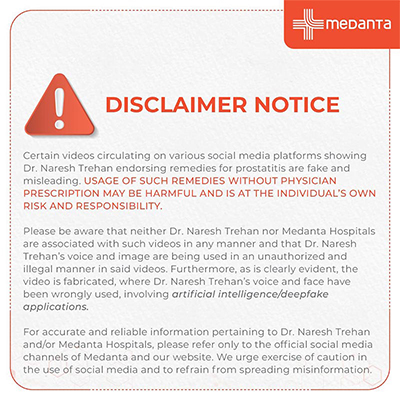Catheterisation: Types, Procedure, Risks and Care Guide

TABLE OF CONTENTS
Catheterisation is one of modern medicine's most widely performed procedures, with over one million procedures conducted annually worldwide. This remarkable frequency highlights its crucial role in diagnosing and treating various heart conditions.
Specifically, catheterisation involves inserting a thin, flexible tube into blood vessels or body cavities for diagnostic or therapeutic purposes.
This guide explores the essential aspects of catheterisation, including its types, procedure details, risks, benefits, and recovery guidelines to help patients better understand this vital medical procedure.
Overview
Doctors use this procedure to evaluate heart function, diagnose conditions such as coronary artery disease, and assess heart valve issues. Furthermore, whilst the procedure typically takes about 30 minutes, the entire hospital visit, including preparation and recovery, can extend between five to nine hours.
A urinary catheter is a flexible tube designed to drain and collect urine from the bladder. This medical device provides a solution for individuals with difficulty with natural urination, offering short-term relief and long-term management options, depending on the specific medical circumstances.
Unlike cardiac catheterisation, urinary catheterisation involves inserting a hollow, flexible tube through the urinary tract or abdomen into the bladder. This procedure allows doctors to empty the bladder when patients cannot do so naturally, preventing potential complications from urine retention.
Urinary catheters come in various materials to accommodate different patient needs and conditions. These materials commonly include:
Silicone
Rubber
Plastic (PVC)
Latex
The choice of material depends on factors like anticipated duration of use, patient allergies, and specific medical requirements. Silicone catheters, for instance, cause less irritation for long-term use, while rubber catheters might be selected for shorter applications.
Doctors may recommend catheterisation for several medical situations. A catheter becomes necessary when patients experience:
Urinary retention (inability to empty the bladder)
Urinary incontinence (inability to control urination)
Need for accurate monitoring of urine output
Surgical procedures involving the prostate or genitals
Medical conditions affecting bladder function, such as multiple sclerosis or spinal cord injuries
Dementia or other cognitive conditions affecting toileting ability
Additionally, catheters help empty the bladder before or after surgery and assist with specific diagnostic tests. For patients with open wounds in the sacral or perineal areas, catheterisation helps maintain dryness, creating better conditions for healing.
The medical world recognises three primary types of urinary catheters, each serving different purposes and situations.
Intermittent catheters are temporarily inserted several times daily to drain the bladder, then promptly removed. This type proves ideal for patients who can manage their catheter care and need periodic bladder emptying.
Indwelling catheters (often called Foley catheters) remain in place for extended periods. These catheters feature a water-filled balloon that prevents the tube from slipping out of the bladder. Urine continuously drains through the tube into a collection bag strapped to the leg or attached to a stand. Most indwelling catheters require changing every three months.
Suprapubic catheters offer an alternative approach by entering the bladder directly through a small opening in the lower abdomen. This method becomes necessary when the urethra is damaged or blocked or when patients require long-term catheterisation but cannot use intermittent catheters. These typically need replacement every six to eight weeks.
Catheters vary in type and size. The French (Fr) scale measures catheter diameter, with typical recommendations of 12-16 Fr for females and 14-16 Fr for males. Smaller sizes accommodate children and infants. The selection of appropriate size matters greatly in minimising discomfort and preventing complications.
The duration of catheter use depends entirely on the underlying medical condition and individual recovery progress.
Procedure Details
Inserting a catheter follows strict medical protocols to keep patients safe and comfortable. The process requires proper training and careful attention to detail from healthcare professionals. Understanding what happens during and after catheterisation helps patients prepare mentally and physically for this common medical procedure.
What Happens During Catheter Placement?
Clinicians begin catheterisation by thoroughly cleaning the genital area with an antiseptic solution to reduce the risk of infection. Initially, they apply a numbing gel and lubricant to minimise insertion discomfort. Following preparation, they don sterile gloves and arrange other sterile equipment, including drapes, sponges, and a single-use packet of lubricant jelly for the procedure.
For female patients, the doctor gently separates the labia to expose the urethral opening. They then clean the area with antiseptic-soaked swabs, working from the urethral opening outward. Afterwards, they carefully insert the lubricated catheter into the urethral opening at approximately a 30-degree angle until urine begins to flow.
For indwelling catheters, once the tube enters your bladder and urine starts flowing, the provider inflates a tiny balloon at the tip with sterile water. This balloon prevents the catheter from slipping out. Subsequently, they attach the catheter to a drainage system and secure it to your thigh using either a catheter securement device or medical tape to prevent movement and urethral traction.
How do I Care for My Catheter?
Proper catheter care remains essential for preventing infections and ensuring comfortable use. Research shows that catheter-associated urinary tract infections account for approximately 30% of healthcare-associated infections. Accordingly, maintaining good hygiene offers the best protection against complications.
Clean your catheter at least twice daily with soap and water. Wash the tube with a wet paper towel or washcloth and pat it dry afterwards. Regular soap and water generally suffice for cleaning the periurethral area. Avoid antiseptics or vigorous cleaning, as these practices can irritate.
Empty your drainage collection bag regularly:
For leg bags: empty every 2-4 hours or when half-full
For larger night bags: empty at least every 8 hours
Always empty bags before they become full
When handling your catheter or drainage system, wash your hands before and after to prevent the spreading of germs. Keep drainage bags below bladder level at all times to ensure proper flow and to avoid urine backflow, which might lead to infection. Furthermore, never allow the drainage bag to touch the floor.
Maintain unobstructed urine flow by checking that:
The catheter and tubing remain free from kinking
The tubing stays adequately secured to prevent pulling
The system remains closed to avoid contamination
Healthcare facilities report that longer catheterisation duration increases UTI risk by approximately 5% daily. Hence, proper care becomes increasingly important the longer you need a catheter.
How Long will I Need to Use a Catheter?
The duration of catheter use varies greatly depending on your specific medical situation. Several patients require catheters only temporarily while recovering from surgery or treatment. Once recovery progresses, the catheter becomes unnecessary and gets removed.
Patients undergoing various surgical procedures might need catheterisation during their hospital stay, particularly for accurate monitoring of urine output. Additionally, acute urinary retention patients often need catheters until the underlying cause resolves.
Conversely, if you have permanent bladder function issues, you might need to use a catheter for months, years, or even permanently. Long-term catheterisation typically applies in cases involving:
Chronic urinary retention
Severe incontinence
Neurological conditions affecting bladder function
End-of-life care
Healing of open sacral or perineal wounds
For patients learning intermittent self-catheterisation, the frequency depends on individual needs. Your doctor might recommend catheterisation regularly during the day or whenever you need to urinate.
Your healthcare team will assess whether normal bladder function has returned before removing an indwelling catheter. They will monitor your first void after removal and check for any difficulties, such as burning, pain, discomfort, or an inability to urinate.
How Long Can a Catheter Be Left In?
Silicone catheters generally offer longer usage periods than other materials. Research indicates that most indwelling catheters should not remain in place for more than three months before replacement. Following this recommendation helps prevent complications like blockages and infections.
Studies exploring catheter replacement frequency found that silicone catheters might safely remain in place for up to 8 weeks in patients requiring long-term catheterisation. This extended duration helps reduce costs and minimises the risks associated with frequent catheter changes.
Meanwhile, suprapubic catheters typically require changing every 6-8 weeks. Consequently, doctors schedule regular appointments for catheter replacement based on the specific type used and individual patient needs.
Can I Sleep with a Catheter?
Sleeping with a catheter presents no problems if you make proper arrangements beforehand. You can sleep in any position, provided the collection bag stays positioned below your bladder level. Preparing your catheter system for sleep requires a few simple steps.
First, ensure the catheter tube has no twists or kinks that might obstruct urine flow overnight. Second, securely hang the collection bag beside your bed or place it in a clean container like a small waste bin lined with a plastic bag.
Before going to bed, switch from the smaller leg bag to a larger night drainage bag. This larger capacity bag reduces the need for emptying at night, allowing for uninterrupted sleep. Furthermore, this system helps maintain proper urine drainage throughout the night.
Many patients find that arranging the tubing path before lying down prevents accidental pulling or disconnection during sleep movements. Properly securing the catheter to the thigh can also prevent uncomfortable tugging sensations that might wake you.
Remember that continuous urine flow into the collection bag indicates proper catheter function. Accordingly, check that your bag collects urine during the night. If you notice interruptions in flow or experience discomfort, contact your healthcare provider promptly.
Risks and Benefits
The risk-benefit analysis remains crucial for patients considering or currently using urinary catheters.
Primary Benefits
The main advantage of catheterisation is its ability to drain your bladder continuously when you cannot do so naturally. Without proper bladder emptying, patients risk developing several serious complications. These include:
Swelling in the bladder (distended bladder)
Urinary tract infections from stagnant urine
Permanent damage to the bladder or kidneys
For many patients, these benefits outweigh the potential risks, mainly when catheterisation serves as the only viable option for emptying the bladder.
Primary Risks
Catheter-associated urinary tract infections (CAUTIs) represent the most significant risk of catheterisation. Indeed, urinary catheters are the leading cause of healthcare-associated UTIs. These infections typically affect the urethra or bladder yet can occasionally spread to the kidneys.
The risk of developing an infection increases substantially with duration of catheter use.
Symptoms of catheter-associated UTIs include:
Pain in the lower abdomen or groin area
High temperature
Feeling cold and shivery
Confusion
Besides infections, several other complications may occur with catheter use:
Bladder Spasms: Bladder spasms are similar to stomach cramps and occur commonly in patients with indwelling catheters. The discomfort happens because the bladder attempts to squeeze out the balloon holding the catheter in place. Doctors often prescribe medication to reduce the frequency and intensity of these spasms when they become problematic.
Catheter Leakage: Leakage around the catheter (bypassing) frequently occurs with indwelling catheters. This issue can result from bladder spasms or during bowel movements. Importantly, leakage sometimes indicates catheter blockage, making it essential to check that urine drains appropriately through the system.
Debris and Blockages: Blood or debris in the catheter tube commonly occurs with indwelling catheters. This material could block the drainage system, requiring immediate attention. Patients should seek advice from their doctors immediately if they suspect a blockage or notice large pieces of debris or blood clots in their catheter.
Less Common Complications: Though less frequent, other potential complications include:
Injury to the urethra during insertion or from repeated catheter use
Narrowing of the urethra from scar tissue formation
Bladder stones (particularly after years of catheter use)
Damage to the bladder from incorrect catheter insertion
Long-term indwelling catheter use increases the risk of developing bladder stones as well as bladder cancer in rare cases.
Risk Reduction Strategies
Certainly, while some side effects remain unavoidable, patients can take several steps to mitigate their risks:
Hydration: Not getting enough fluids may lead to dehydration and subsequent UTIs. Pale urine generally indicates adequate hydration.
Diet: Lack of fibre in your diet can cause constipation, which may lead to catheter leakage during bowel movements. Consuming adequate high-fibre foods such as vegetables, grains, and fruits helps maintain regular bowel movements.
Catheter Management: Proper catheter arrangement prevents blockages and leakage. Avoid twists or bends in the tubing, and ensure the urine collection bag remains appropriately positioned.
Hygiene: Regular cleaning of the catheter and the surrounding skin area reduces infection risk. For patients unable to manage this independently, assistance from a caregiver proves beneficial.
Duration Management: Perhaps most importantly, catheters should remain in place only as long as medically necessary. The recommendation states that indwelling catheters shouldn't be used longer than three months before replacement. Doctors should remove catheters immediately once they're no longer needed.
Each catheterisation case requires an individual assessment, balancing the essential benefits against potential risks. Through proper care, hygiene practices, and medical supervision, many complications can be minimised, allowing patients to experience the therapeutic advantages of catheterisation whilst reducing adverse effects.
Recovery and Outlook
Most patients adapt well to life with a catheter once they understand proper care techniques and adjustments. Recovery after catheterisation varies depending on the type of procedure performed and individual health factors.
Most catheter users continue their daily lives largely uninterrupted. Remarkably, studies show that despite initial concerns, many patients resume their normal activities, including work, exercise, swimming, travel, and even intimate relationships, with proper guidance and equipment. Doctors typically offer specific recommendations about when these activities can safely resume after catheter placement.
For those recovering from cardiac catheterisation, the first day often brings mild fatigue and tenderness at the wound site. This tenderness typically lasts up to a week, whilst bruising might persist for up to two weeks. Taking steps to protect the insertion site remains crucial during early recovery:
Avoid bathing for approximately 24 hours (showering is permitted, but keep the wound as dry as possible)
Remove any groin plaster the day after the procedure without replacement
Refrain from driving until medical clearance, typically within three days
Do not go for strenuous activities, sports or heavy lifting for about two days
Proper training and support provide the foundation for successful recovery from urinary catheterisation. Healthcare organisations emphasise that patients and their carers should receive comprehensive information about catheter management at home, including infection prevention techniques. Regular records of catheter insertions and changes help track care progress, while ongoing support is vital for addressing concerns as they arise.
Maintaining optimal hydration is a crucial aspect of catheter care. Drinking 8 to 10 glasses of clear fluids daily (preferably water) helps flush the system and reduce infection risk. Additionally, fibre-rich foods prevent constipation, which can cause discomfort when using catheters.
For patients with indwelling catheters, doctors recommend:
Changing catheters only when necessary or according to manufacturer instructions
Keeping hands clean before and after handling the catheter
Washing the insertion site daily with soap and water
Positioning drainage bags below bladder level but never touching the floor
Emptying drainage bags regularly before they become full
Emotionally adapting to catheter use represents a significant part of recovery. Seeking support from family, friends, or support groups makes this transition substantially easier. Patients should understand that initial adjustment difficulties are normal and typically resolve with time and proper guidance.
The long-term outlook for catheter users remains generally positive. While catheter-associated urinary tract infections (CAUTIs) represent the most common healthcare-associated infections, proper care techniques significantly reduce these risks. Doctors stress the importance of reviewing catheter necessity regularly and removing catheters as soon as medically feasible.
Even with long-term catheter use, maintaining quality of life remains entirely possible. Studies emphasise that catheterisation impacts work and social activities most significantly, highlighting areas where additional support might prove beneficial. Doctors, especially nurses, should regularly assess catheter-related complications and educate patients about recognising warning signs and implementing proper self-care techniques.
When To Call the Doctor
Prompt medical attention helps prevent serious complications from catheter use. Knowing when to contact your doctor allows you to address problems early, potentially avoiding hospitalisation.
Contact your clinician immediately if you experience:
Bladder spasms that refuse to go away
Bleeding into or around your catheter
High temperatures or chills
Large amounts of urine leaking around the catheter
Skin sores developing around a suprapubic catheter
Stones or sediment accumulating in the catheter or drainage bag
Swelling of the urethra around the catheter site
Urine with a pungent smell or that appears thick or cloudy
Very little or no urine draining despite adequate fluid intake
Passing large pieces of debris or blood clots
If you think your catheter might be blocked
Even if other symptoms aren't present, contact your doctor whenever you suspect a urinary tract infection. In patients with spinal cord injury, catheter-related UTIs may present differently – often, the only symptoms are fever, sweating, abdominal discomfort, or increased muscle spasticity.
For cardiac catheterisation patients specifically, redness, any increase in pain, swelling or discharge at the wound site warrants immediate medical attention.
FAQs
What is the primary purpose of catheterisation?
Catheterisation involves inserting a flexible tube into the bladder to drain urine. This procedure helps prevent infections and kidney damage by ensuring the bladder is emptied regularly or continuously, particularly for individuals who have difficulty urinating naturally.
How long can a catheter typically remain in place?
Most indwelling catheters should be replaced every 3 months. However, silicone catheters may safely remain in place for up to 8 weeks in patients requiring long-term catheterisation. Suprapubic catheters usually need changing every 6-8 weeks.
Can I sleep comfortably with a catheter?
Yes, you can sleep with a catheter in any position as long as the collection bag is positioned below your bladder level. Switching to a larger night drainage bag before bed is advisable to reduce the need for emptying during the night and ensure proper urine drainage.
What are the main risks associated with catheter use?
The primary risk is developing catheter-associated urinary tract infections (CAUTIs). Other potential complications include bladder spasms, catheter leakage, blockages, and, in rare cases, injury to the urethra or bladder. The likelihood of complications increases with the duration of catheter use.






